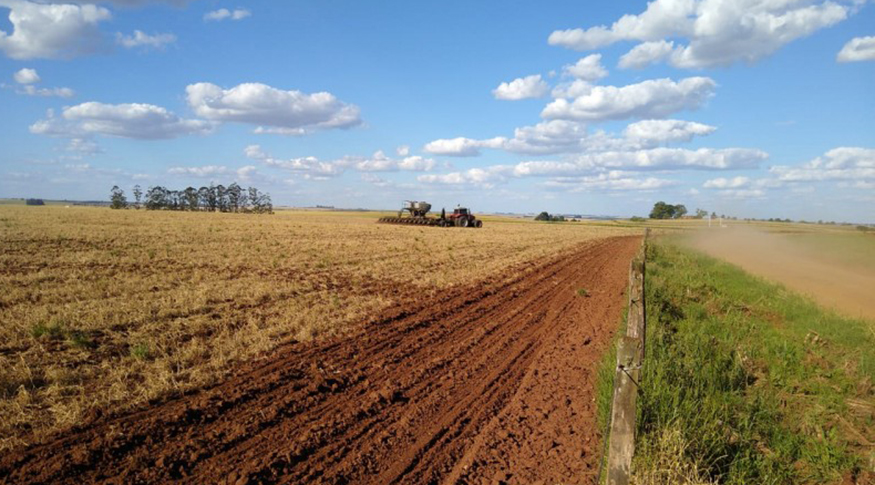Agricultural production
February estimate drops 1.3% with drought in Rio Grande do Sul, but 2023 crop will still be a record
March 09, 2023 09h00 AM | Last Updated: March 10, 2023 06h03 PM

The Brazilian crop of cereals, legumes and oilseeds should reach a new record in 2023, totaling 298.0 million metric tons, according to the February estimate of the Systematic Survey of Agricultural Production (LSPA), released today (March 09) by the IBGE. The value is 13.3% or 34.9 million metric tons greater than the 2022 crop.
In relation to January, the estimate recorded a reduction of 1.3% (3.9 million metric tons), the first drop since the beginning of the projections for 2023. Even so, the expectation is for record production of soybeans and corn in the year.
The area to be harvested should be 75.8 million hectares, showing growth of 3.5% compared to the area harvested in 2022, an increase of 2.6 million hectares. In relation to the previous month, the area to be harvested increased by 36,592 hectares (0.0%).
“In 2022, we saw a sharp drop in the soybean crop. In 2023, the product is recovering, with an increase of 21.3%. In addition, the corn crop is once again breaking a production record. These two products, to a large extent, help us understand the record estimate for this year”, analyzes Carlos Barradas, LSPA manager.
In relation to January, the main declines in production estimates were for soybeans (-1.7% or -2,524,827 t), corn 1st crop (-2.5% or -733,342 t), corn 2nd crop ( -0.4% or -373,587 t) and rice (-2.5% or -252,744 t).
Agricultural production in Rio Grande do Sul has suffered the effects of the La Niña phenomenon, with severe drought, which led to a reduction in its production estimate for the month.
“Production data from Rio Grande do Sul, which is facing drought, were first accounted for in February. That's why we see this drop of 3.9 million metric tons compared to the previous month. The state is our third largest grain producer,” explains Mr. Barradas.
Barradas adds that despite the impacts suffered in Rio Grande do Sul, the estimate of soybean and corn production in the country remains a record for 2023, driven by good production, planting and harvesting conditions.
“Unlike last year, in 2023 the drought is concentrated more in Rio Grande do Sul, and with less intensity in the State. In the other producing states, such as Mato Grosso, Goiás, Mato Grosso do Sul, it is raining very well. That's why we're breaking a new production record for soybeans, corn and grains”, analyzes the LSPA manager.
The estimate for rice production was 10.0 million metric tons, down 2.5% compared to the previous month and 6.0% compared to 2022. Despite the losses, which in February reached 252,744 metric tons, this production should be enough to supply the Brazilian market.
“The main rice producer in the country is Rio Grande do Sul. With the drought, it is possible that water availability for irrigation be reduced, since when there is a drought like this one, many municipalities restrict water for this purpose. The priority is the urban supply of the populations", emphasizes Mr. Barradas.
With a 29.7% share, Mato Grosso leads the national grain production
Mato Grosso leads as the largest national grain producer, with a share of 29.7%, followed by Paraná (15.1%), Rio Grande do Sul (11.8%), Goiás (9.3%), Mato Grosso do Sul (8.3%) and Minas Gerais (5.9%), which together represented 80.1% of the total.
The estimate of the production of cereals, legumes and oilseeds showed positive annual change for five major regions: the Central-West (8.5%), the North (11.1%), the Southeast (1.0%), the Northeast (2.3%), and the South (32.6%). As for the monthly change, there was increase in the Northeast Region (0.5%); there was stability in the North and Southeast Regions and declines in the South (-4.3%) and Central-West Regions (-0.1%).
About the LSPA
Implemented in November 1972 with the purpose of meeting users' demands for monthly short-term statistical information, the LSPA provides estimates of planted areas, harvested areas, amount produced and average yield of products selected based on criteria of economic and social importance for the country. It allows not only the monitoring of each investigated crop, from the planting intention phase until the end of the harvest, in the calendar year of reference, but also the forecast of crops for the following year, for which the survey is carried out in the months of October, November and December. Access the data on the Sidra database.



















